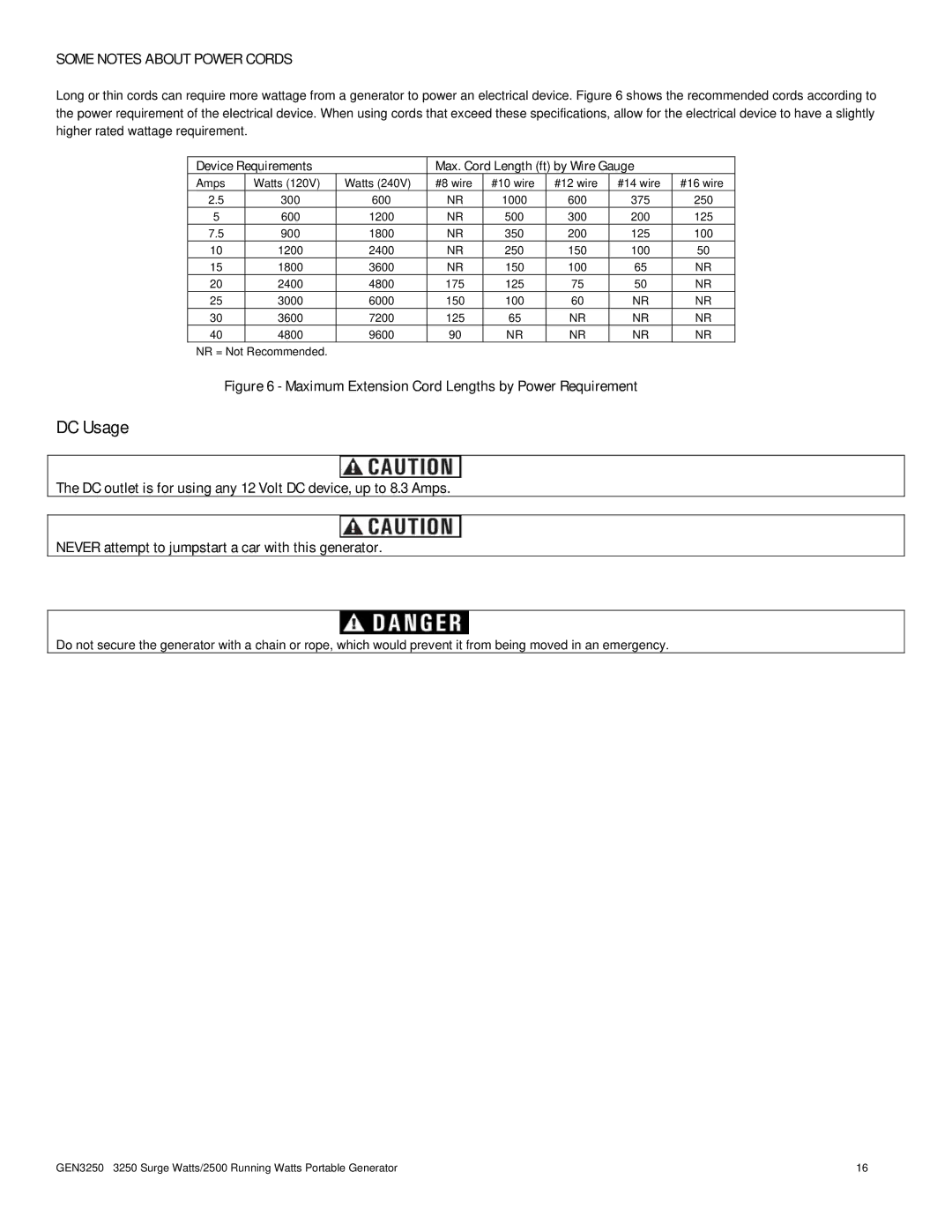
SOME NOTES ABOUT POWER CORDS
Long or thin cords can require more wattage from a generator to power an electrical device. Figure 6 shows the recommended cords according to the power requirement of the electrical device. When using cords that exceed these specifications, allow for the electrical device to have a slightly higher rated wattage requirement.
Device Requirements |
| Max. Cord Length (ft) by Wire Gauge |
| ||||
Amps | Watts (120V) | Watts (240V) | #8 wire | #10 wire | #12 wire | #14 wire | #16 wire |
2.5 | 300 | 600 | NR | 1000 | 600 | 375 | 250 |
5 | 600 | 1200 | NR | 500 | 300 | 200 | 125 |
7.5 | 900 | 1800 | NR | 350 | 200 | 125 | 100 |
10 | 1200 | 2400 | NR | 250 | 150 | 100 | 50 |
15 | 1800 | 3600 | NR | 150 | 100 | 65 | NR |
20 | 2400 | 4800 | 175 | 125 | 75 | 50 | NR |
25 | 3000 | 6000 | 150 | 100 | 60 | NR | NR |
30 | 3600 | 7200 | 125 | 65 | NR | NR | NR |
40 | 4800 | 9600 | 90 | NR | NR | NR | NR |
NR = Not Recommended.
Figure 6 - Maximum Extension Cord Lengths by Power Requirement
DC Usage
The DC outlet is for using any 12 Volt DC device, up to 8.3 Amps.
NEVER attempt to jumpstart a car with this generator.
Do not secure the generator with a chain or rope, which would prevent it from being moved in an emergency.
GEN3250 3250 Surge Watts/2500 Running Watts Portable Generator | 16 |
